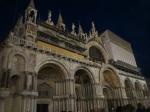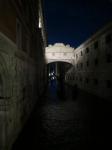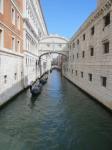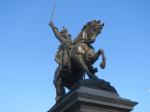St Marks Square. Venice
St Mark’s Square is Venice’s principal square, it is full of history and surrounded by some magnificent architecture. We were fortunate to spend the afternoon and evening here, several things to remember, firstly it is packed with tourists of every nationality and secondly, on high tides the square floods, hence all the wooded duck boards which are stacked up at strategic places around the square and the Basilica.
Piazza San Marco was constructed in the 9th century as a small square with trees dotted here and there. The square was laid out in front of the original St, Mark’s Basilica, at the time a small chapel which was part of the Doge’s Palace. The square was separated from the palace by a small canal – the Rio Batario. Already a central gathering place for Venetians, the piazza was enlarged in 1174 after the canal and adjoining dock was filled in. The square was paved with bricks in 1267 in a herringbone pattern. In 1735 the bricks were replaced with natural stone and laid in a more complicated pattern designed by the architect Andrea Tirali. The design also marked the location where merchants could set up their stalls.
As the largest square in the City and the only one to be given the designation of Piazza St Mark’s Square has always been the location of important government buildings.
The Basilica San Marco is just as remarkable on the outside as it is on the inside and reflects the city’s Byzantine connection. The magnificent St Mark’s Basilica was commissioned in 1071 by doge Domenico Contarini and built in a Venetian Byzantine style with a mixture of eastern and western trends. Nicknamed the Church of God because of its opulence, it has been the seat of the Patriarch of Venice the Archbishop of the Roman Catholic Archdiocese of Venice since 1807.
The Bell Tower (Campanile) was replaced in 1902 after the previous one had collapsed. The internal lift to the top of the bell tower enables some stunning views across the city. It is said on a clear day you can see the snow-capped mountains of the Alps. It was from the top of the tower that Galileo demonstrated his telescope to Doge Leonardo Dona in 1609.
San Teodoro is one of the two columns which marked the entrance to Venice when the city was only accessible by water.
|






























